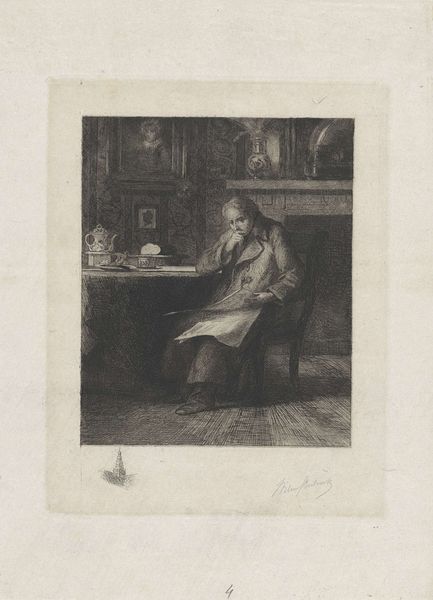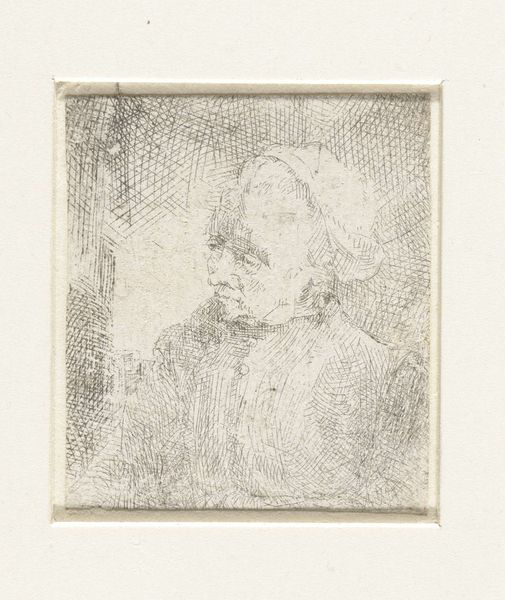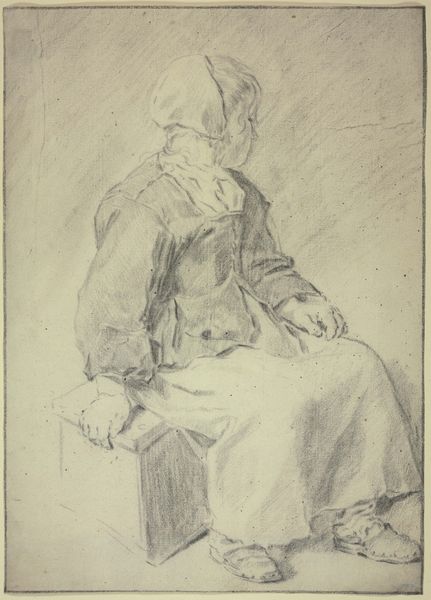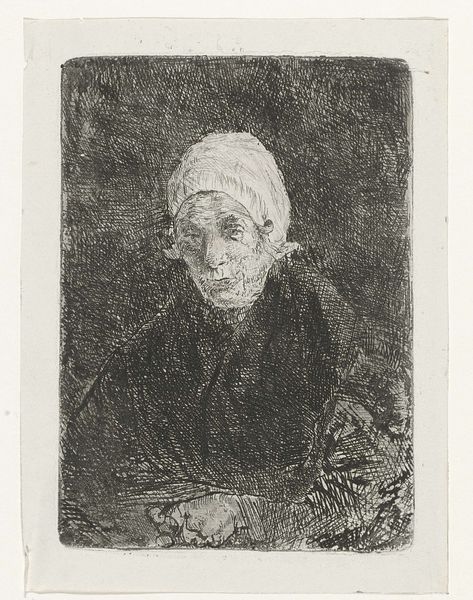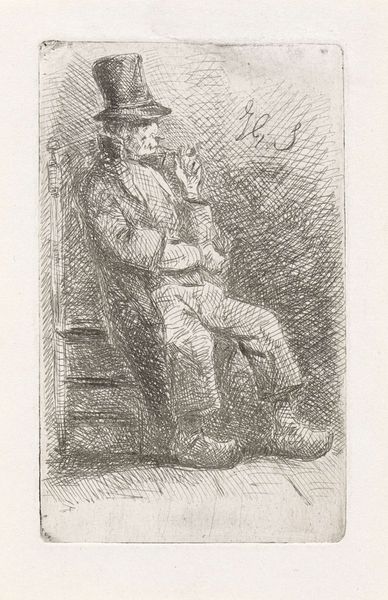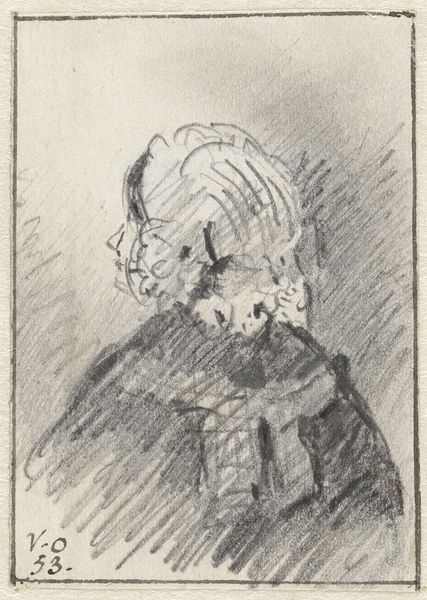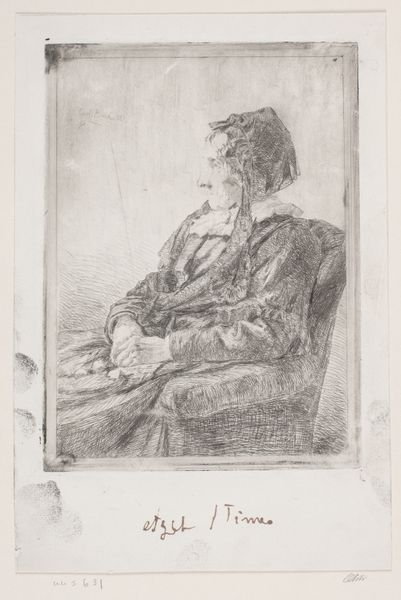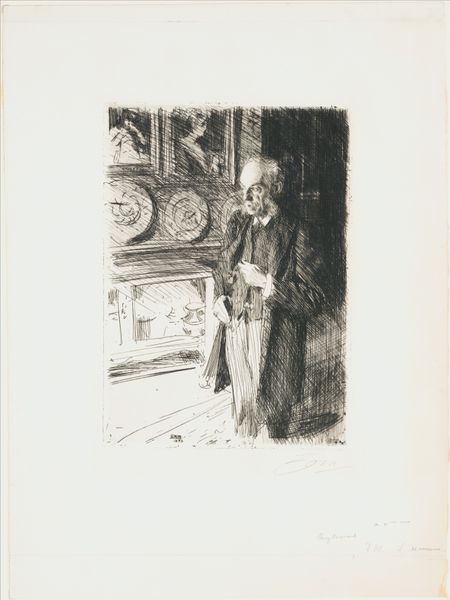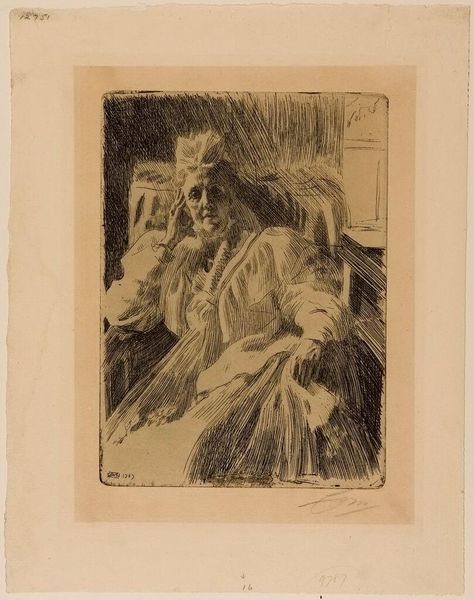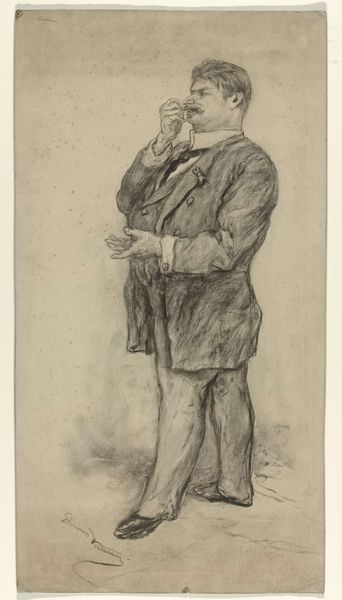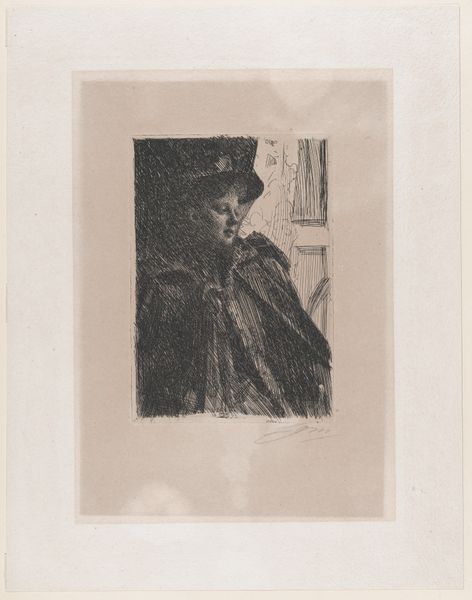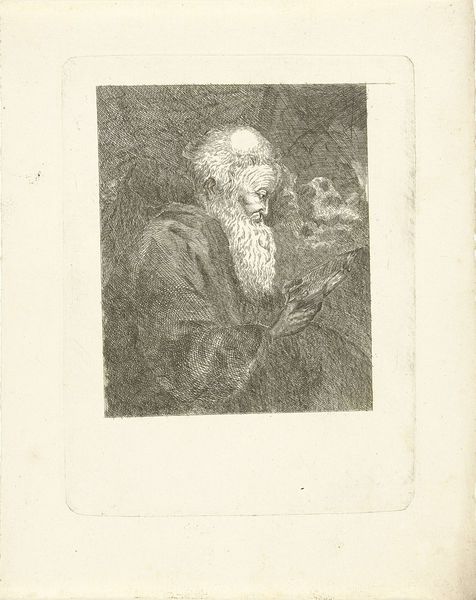
drawing, print, etching
#
portrait
#
drawing
#
self-portrait
# print
#
etching
#
vanitas
#
symbolism
Copyright: Public Domain: Artvee
Curator: This is James Ensor's self-portrait, etched in 1889, titled "My Portrait with Skull." Editor: Disturbing, immediately! The figure emerges from this murky background with an unnerving clarity. The skull... it feels superimposed, doesn't it? Deliberately placed over his own features. Curator: Ensor, during the late 19th century, challenged societal norms through his art. He was critiquing the bourgeoisie, and his preoccupation with mortality, with themes of vanitas, reflected a wider fin-de-siècle anxiety. Consider, too, his social isolation at this time; his family was in decline, his artistic choices increasingly controversial. Editor: Yes, the cross-hatching definitely adds to the feeling of unease. It’s almost frenetic, chaotic. It breaks down any smooth transitions and creates a visual tension that is quite effective, and unnerving, as I said. I can’t quite place what's on his head – it seems that he wanted to crown it with with vegetal life – which strikes me as poignant. The man himself is facing right but slightly away as if he knows there is something wrong in the air. The death’s head reminds him every moment that it's never too far away... The whole thing really feels morbid. Curator: Ensor returned repeatedly to self-portraiture, often incorporating grotesque imagery and the symbolic use of masks, skeletons, and his view of humanity’s inherent ridiculousness. These self-portraits provided a space for self-exploration but also, more significantly, they provided opportunity for critical social commentary. And here the self-portrait allowed Ensor to embrace a profound critique of the times. Editor: There is that subtle light, illuminating one hand—a strangely calm hand for all of that, seemingly holding its own amidst all this turmoil. Perhaps indicating that Ensor retained a calm vision in his mind... A beacon amid decay, literally— it leads the eyes through this piece, providing some balance within the otherwise nervous arrangement. It's intriguing how something so minimal carries such weight. Curator: Absolutely, it shows how art engages in more extensive socio-political critiques and artistic dialogue within the modern era. It forces viewers to reconsider social stability and mortality through this art. Editor: I’d agree, in Ensor’s etching there is an engagement beyond merely form, one in which you also witness that profound, quiet rebellion against death itself.
Comments
No comments
Be the first to comment and join the conversation on the ultimate creative platform.
